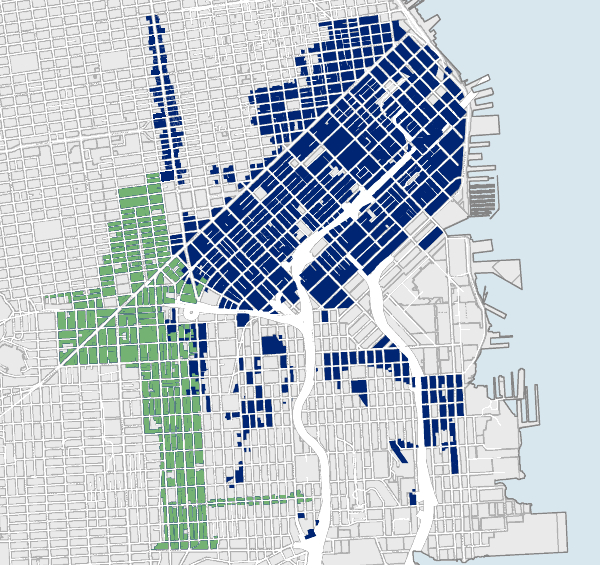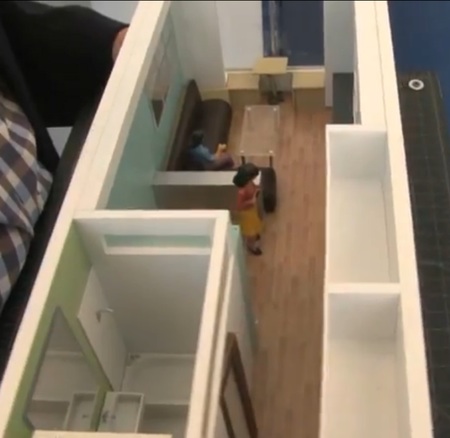A developer-backed proposal to shrink the minimum living space of a San Francisco apartment to 150 square feet faces a delay of at least a month, while the supervisor who floated the plan scrambles to shore up support from wary colleagues.
Supervisor Scott Wiener last week delayed a vote on the legislation until at least September. Supporters of the plan say they are scrambling to line up the necessary votes on the Board of Supervisors.
Wiener’s proposal first appeared before the board in June. It would redefine “efficiency” apartments, reducing the minimum allowable living space to 150 square feet from the current 220 square feet, not including the kitchen, bathroom and closet.
Since the ordinance’s introduction, it was amended to clarify that the new rules would only apply to new construction, an effort to mollify concerns that landlords could circumvent rent control by chopping up apartments and calling them new construction, which would qualify for new certificates of occupancy, thus outside of the purview of rent control. Another amendment required residency in the smallest units to be limited to two people after tenant activists expressed fears that families now living in larger efficiencies could be evicted if their living conditions became retroactively illegal.
Tim Colen, executive director of the Housing Action Coalition, a group of developers, lobbyists, lawyers, architects and a few civic organizations, proposed the idea and is its biggest supporter. Colen said that Wiener is pulling the proposal back temporarily to avoid having it voted down this summer. “We go back to the drawing board and see if we can address the concerns,” Colen said.
At Tuesday’s Board of Supervisors meeting, Wiener said that continuing discussions with the board’s president, David Chiu, and Supervisor Jane Kim “may prove fruitful.” Wiener did not return calls or emails seeking comment.
A report from the Planning Department showed that most of the new efficiency units would be constructed in neighborhoods without density controls, such South of Market, part of Kim’s supervisorial district.
Kim questioned whether there was market demand for such tiny dwellings: “Will tech workers with some of the highest salaries in the city really want to live in a 150-square-foot efficiency space when they could rent a larger apartment with roommates?
“If developers want to go ahead and build 220-square-foot units, I’m not crazy about it, but they can already do that under our building code,” she added. “I guess I question why we need to allow developers to go smaller.”
Supporters say the plan would boost residential development in a city reeling from a scarcity of housing. The average monthly price of an apartment lease is now $2,734, up 12.9 percent since 2011 according to the rental market research firm Real Facts. Housing developers call the proposed tiny apartments “affordable by design,” yet many housing advocates call the units, which would need custom retractable beds and kitchen tables, compact stowage and showers right next to the toilet, “shoeboxes.”
Land use attorney Sue Hestor said she worries that the move would hurt efforts by nonprofit developers to build affordable housing by raising the value of undeveloped land.
Although the ordinance now caps occupancy at two residents, housing advocates worry that the city won’t have the resources to enforce the limit. That could mean that low-income families, previously squeezed into efficiency apartments of 250 to 300 square feet, would end up in units half that size.
Amanda Heier, executive director of the Raphael House, a San Francisco nonprofit organization dedicated to helping at-risk families find stable housing, echoed that concern.
“It’s worrisome that we have this less-sustainable model being supported, when the real need is to create larger units that can be used time and time again,” Heier said. “What if there’s a sudden change in the economy, the tech-boom? Then we have this surplus of units that are essentially hotel rooms that can’t easily be converted into family or multi-use units.”
Asked to review the legislation for environmental impact, the Planning Department reported that potential building projects based on smaller apartments were too varied to allow its effects to be quantified. Each proposed building project would have to be considered for meaningful environmental analysis.











